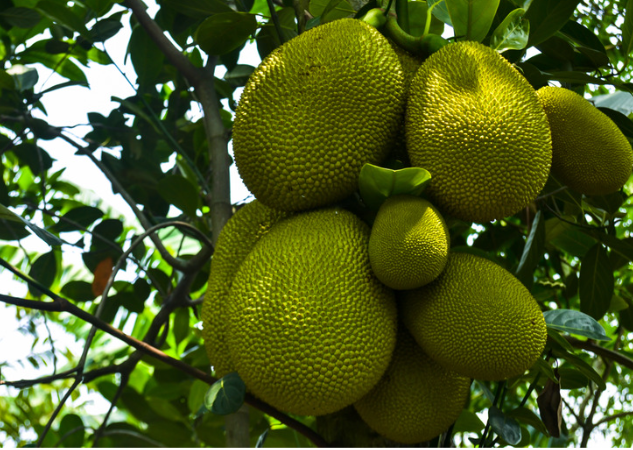Sri Lankan jackfruit, known locally as “kos,” is a widely used fruit in Sri Lankan cuisine, and it plays a significant role in both savory and sweet dishes. The fruit is versatile and used in its different stages of maturity to create a range of unique dishes.
Types of Jackfruit Dishes Based on Maturity
- Young Jackfruit (Polos):
- When the jackfruit is young, tender, and unripe, it is used in savory dishes like Polos Curry. At this stage, the fruit has a neutral flavor but a fibrous, meat-like texture that absorbs the spices well. Young jackfruit is often slow-cooked with a blend of spices, tamarind, and coconut milk to create a rich curry with a texture similar to pulled pork or meat.
- Mature Jackfruit (Kos):
- As the jackfruit matures but is not yet fully ripe, it is used in dishes like Kos Mallum or jackfruit stir-fry. The flesh is slightly firmer and is shredded or cut into small pieces. This form is cooked with spices, coconut, and other vegetables, often served as a side dish with rice.
- Ripe Jackfruit:
- When fully ripe, jackfruit becomes sweet, fragrant, and juicy. It is consumed as a fresh fruit or used in sweet preparations such as jackfruit roti or desserts. The flesh turns a golden yellow color, and the fruit exudes a sweet, tropical flavor reminiscent of a mix between mango, pineapple, and banana.
- Jackfruit Seeds (Kos Ata):
- The seeds inside the jackfruit are also edible and are used in curries or boiled and eaten as a snack. They have a nutty flavor and a creamy texture when cooked. Jackfruit seed curry is a common dish made with coconut milk, spices, and sometimes vegetables.
Cultural Significance
- Jackfruit is considered a “miracle” food in Sri Lanka due to its ability to feed many people, especially during times of scarcity or economic hardship. It is seen as an inexpensive, yet highly nutritious food source.
- In Sri Lanka, every part of the jackfruit is used, from the young flesh to the seeds, making it a symbol of sustainability and resourcefulness in Sri Lankan cuisine.
Jackfruit continues to be a staple in traditional Sri Lankan meals, enjoyed by both rural and urban communities across the country.
